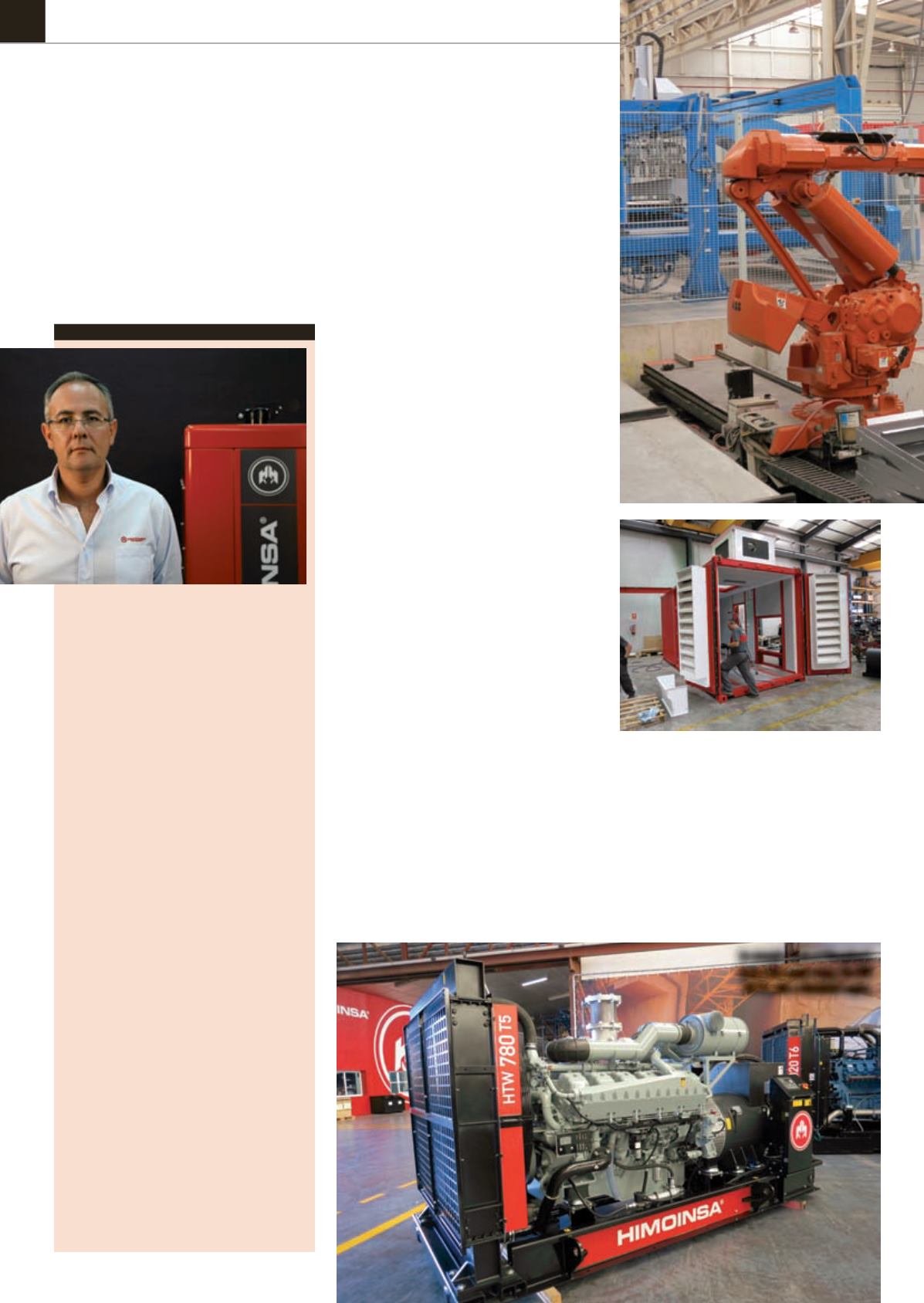
14
HIMOINSA INTERVIEW
IRN NOVEMBER-DECEMBER 2013
Europe strategy
Francisco Inglés, Himoinsa’s sales manager for
Europe, says the company had to completely
change its strategy when the crisis hit its sales
to Europe’s rental sector.
In the boom years, rental was a key market
for the manufacturer, with standby power
applications representing little more than 20%
of its business. Now, that non-rental market
accounts for 60-65% of its business in Europe.
“We were focused on rental, prime power”,
he says, “but we had to convert to standby. The
crisis taught us that we have to become more
flexible, try to find new niches, niches that
existed but we didn’t pursue.”
He is adamant that rental remains a
cornerstone for Himoinsa in Europe. “We have
not forgotten rental at all – we developed the
PowerCube for rental, and extended our rental
range up to 660 kVA.”
Mr Inglés, who has spent almost 15 years with
Himoinsa, says there are signs that Europe is
improving, although he remains realistic about
growth prospects.
He says the company performs best where
it has its own subsidiary, a fact that has led
the company to create a UK subsidiary, led
by former SDMO sales manager Clive Dix. The
business will be fully operational at the start of
2014, adding to the existing Himoinsa companies
already operating in Germany, Poland, France
and Italy.
He is also optimistic about the previously
mentioned 500/600 kVA PowerCube; “It’s
not very well known yet, but it will be very
interesting to rental companies because its
small – which makes it easy for stacking – and
has low noise levels.”
says Mr Inglés, “We will make it competitive.”
Although the target market for the gensets will
be Asia Pacific Himoinsa said it would consider
requests for the units from other markets where low
emission engines are not required, such as South
America.
The range, which will be in production by January
In addition to its compact rental generator sets
Himoinsa makes large containerised generators. It has
also begun cooperating with German company Frerk on
large sets using heavy fuel oils (HFO).
the standby market.”
Perhaps even more important is the plan to expand
its US operation, based in Kansas. An investment of
around US$25 million will see the company open a
sheet metal fabrication facility that will increase the
local content – canopies are currently imported to
the US – and increase production capacity by around
seven or eight times. It will also make its gensets
more competitive, says Mr Gracia. That facility
should be up and running by 2015.
North America and its high-spending rental sector
is already a major market for Himoinsa – accounting
for around a fifth of all revenues – and Mr Gracia
says it has the potential to be much bigger and is a
An example of one of Himopinsa’s
heavy duty engine range, the HTW
780 T5, with a Mistubishi engine.
very “strategic market”.
With Europe likely to be flat over the coming
years and African growth still gradual rather than
dramatic, it is North America and Asia Pacific
that Mr Gracia says represent “the meat on the
barbeque. All markets are important, but we think
we can grow faster in these two areas.”
Currently Europe, the Middle East and Africa
represent 55% of Himoinsa’s sales, with the
Americas at 30% and Asia Pacific and India and
15%. Mr Gracia says an equal third share between
the three regions is what he would prefer within five
years, meaning that Asia Pacific needs to expand.
In that same period the company aims to double
revenues to €500 million.
The company hopes that working with good
distributors in Asia will help it grow, although the
competition from low cost Chinese suppliers makes
it difficult. Himoinsa has some strong partners,
such as the RMA Group in Thailand and Myanmar –
a business that now has its own rental operations
– and Tuyet Nga Co Ltd (TNC) in Vietnam, a sales
and rental company. In Australia it has respected
distributors in Crommelins Machinery (for the west
of the country) and Generator Power (in the east).
One important element of the Asia Pacific
strategy is the launch of a new range of gensets
using engines made by Wuxi Diesel, a subsidiary of
Chinese automotive and truck manufacturer FAW
Group.
This is a departure from its usual strategy, and
Himoinsa is careful to emphasise that the new
range will not compete with its existing Chinese
built gensets – produced at its plant in Changzhou
- but will address the 30% of the Asia Pacific genset
market that uses lower cost engines produced by
Chinese suppliers. Himoinsa says it cannot currently
compete in this segment.
Chinese-made engines
The company said it has looked long and hard at
the Wuxi Diesel operation and says the gensets,
although cheaper, will be subject to the same
degree of testing and quality control that it applies
to all its products.
“We need to enter this 30% of the market to
maintain sustainable growth”, says Manuel Inglés,
managing director of Himoinsa China. The engines
will be branded Himoinsa and will be supported and
serviced by the company in the same way as with its
other gensets.
“We are talking about a two-digit price reduction”,
Francisco Inglés.


